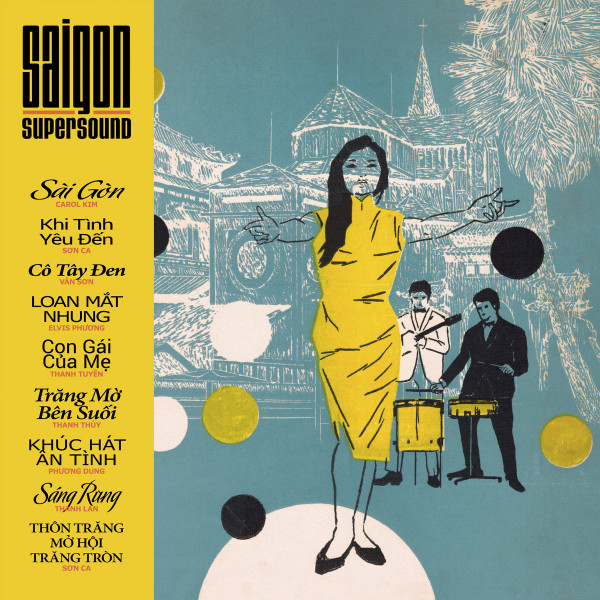All content copyright © Sound Metaphors records



Various
Saigon Supersound 1964-75 Volume Two
2xLP Compilation
Oct 5, 2018 - Germany
The modern music of Vietnam cuts a window into the soul of a Vietnamese person and the country’s history as a whole.
Tracklist
A1 - Sài Gòn
A2 - Khi Tình Yêu Đến
A3 - Cô Tây Đen
A4 - Loan Mắt Nhung
B1 - Con Gái Của Mẹ
B2 - Trăng Mờ Bên Suối
B3 - Khúc Hát Ân Tình
B4 - Sáng Rừng
C1 - Thôn Trăng Mở Hội Trăng Tròn
C2 - Xin Lễ Cưới Em
C3 - Funky Do
C4 - Tại Anh Hay Tại Em
C5 - Túp Lều Lý Tưởng
D1 - Đường Lên Non
D2 - Nhớ Mình Anh Thôi
D3 - Mừng Nắng Xuân Về
D4 - Những Đồi Hoa Sim
D5 - Lơ Thơ Tơ Liễu
About this record:
Much like the country itself, the music of Vietnam has endured many twists. As the result of the Geneva Accords in 1954, Vietnam was divided into two. From the North, the Nationalist forces fought to reunite Vietnam as a Communist State, while the American troops backed the government of the South. This caused a mass migration of Northerners to the South, which includes many Tân Nh?c (Modern Music) singers and songwriters. Often characterized by its emotive, poetic and prolific personality, Tân Nh?c continued to freely develop in the South and progressively vacating from the influences of its main inspiration, French music. In the North, the Resistance music, or the so-called Nh?c ?? (Red Music), which promoted socialism, patriotism and anti-capitalism was the only genre allowed on national radio. Tân Nh?c was something new to the South Vietnamese repertoire. Between 1954–1960, the theme of hometown (quê h??ng) was a main inspiration for many songwriters such as Hoàng Thi Th?, Lam Ph??ng and Nguy?n H?u Thi?t. The 9th title of the compilation, “Thôn Tr?ng M? H?i Tr?ng Tròn” showcases a variety of images that were often described in this genre: the harvest moon, playful children, old mother… Every recording made in this era is then an organic combination of human experiences, communications and uniqueness. In 1965, the first American troop landed in Vietnam, bringing with them the musical influences of the Beatles, Bob Dylan, Jimi Hendrix, Elvis Presley… The Vietnamese people quickly integrated it into the repertoire with hope to further diversify the music of Vietnam. Constantly changing and learning from different cultures, the modern music of Vietnam cuts a window into the soul of a Vietnamese person and the country’s history as a whole.

